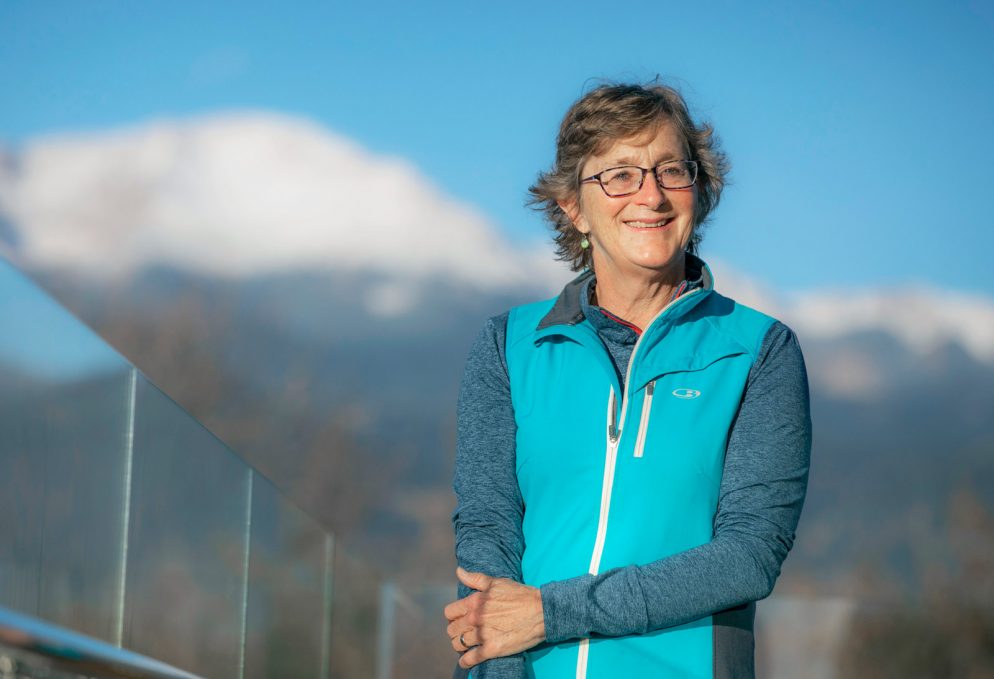Professor of Geology Christine Siddoway set sail from Punta Arenas, Chile, on Jan. 24, heading for Antarctica as part of the International Ocean Discovery Program Expedition 379. The expedition is dedicated to obtaining records and data from the West Antarctic Ice Sheet and the Amundsen Sea.
The expedition will provide important clues into the future of ice sheet change, the geological foundations, and the future of climate-human convergence, because the West Antarctic Ice Sheet will play a critical role in future sea level rise. If melted as a result of climate change, scientific estimates widely report that the global sea levels could see a rise of 10.8 to 14.1 feet (3.3 to 4.3 meters).
“That amount of sea level rise will have immediate consequences for large populations that live in coastal areas, for food growing around the world, and for the way our governments and international relations can maintain a harmonious, peaceful environment, or on the other hand, shift into a period of strife,” says Siddoway.
One of 30 scientists from around the world on the expedition, Siddoway, with her career of research into structural geology, brings over two decades of expertise to the team. Her most recent relevant experience comes from her work as a member of the ROSETTA Ice Project — an association of scientists from Colorado College, the Lamont-Doherty Earth Institute, the Scripps Oceanographic Institute, and the nonprofit Earth Space Research — which gathers together scientists from across five disciplines.
The ROSETTA Ice Project is a multi-disciplinary and multi-institutional project focused on the Ross Ice Shelf, examining changes to the area as a result of climate change.
“The innovative and difficult challenge of this research, being part of this team, is that it requires us to genuinely work together — from across multiple institutions and different fields — learning the content of vastly unrelated fields in respect to pressing scientific questions to find a unified narrative. It’s hard work,” says Siddoway, who researches mountain building and continental evolution.
ROSETTA Ice is among the first to bring contemporary remote sensing methods to the ice sheet region, using airborne gravity magnetism, core sampling, lidar (remote sensing using light), and a variety of others — the most critical being ice-penetrating radar.
“The Antarctic ice sheet in some locations, where the thick ice floats upon ocean water, is undergoing very rapid change, with continental ice moving into the sea, breaking off of the continent and melting in the sea,” Siddoway says. “Each time a rapid event like that happens there is a consequence for sea level and our climate system, because ocean water is the biggest factor in global climate change.”
Siddoway has been incorporating CC into her Antarctic research since she arrived at the college, regularly taking students there for fieldwork.
“Currently, we’re working with three CC students [and recent grads] on the ROSETTA Ice Project, Zoe Krauss ’19, Matt Tankersley ’18, and Alec Lockett ’17,” says Siddoway. Lockett joined Siddoway on field data collection trips in both 2016 and 2017. In the coming summer, Jonny Norwine ’21 and Sarah Packard ’21 will join in the research.
“These students, while not directly in the field with me right now, are getting a true virtual reality experience of Antarctica because of all the fundamental knowledge we’ve gained over two decades of research,” explains Siddoway.
“They don’t just see a flat, white, windy, cold featureless surface, they see layers and layers of information we can examine together, moving up and down from atmosphere through ice through ocean and into the bedrock.”
Antarctic field research is unlike any other field research, explains Siddoway.
“You work two shifts; there are 24 hours of daylight, so you can work around the clock. The student or students who’re doing research, along with myself, are having such a different experience to any other on the planet – literally!”
